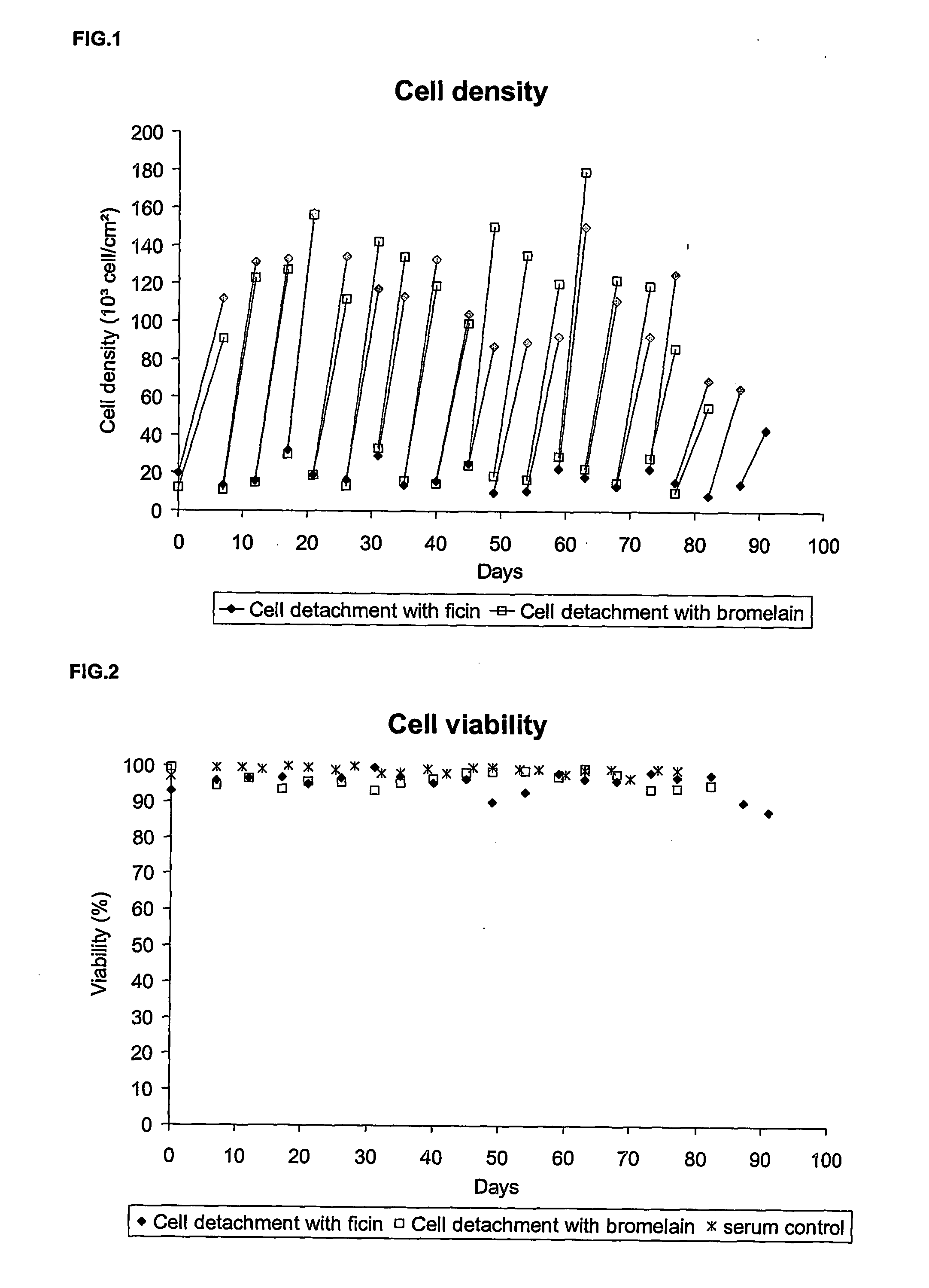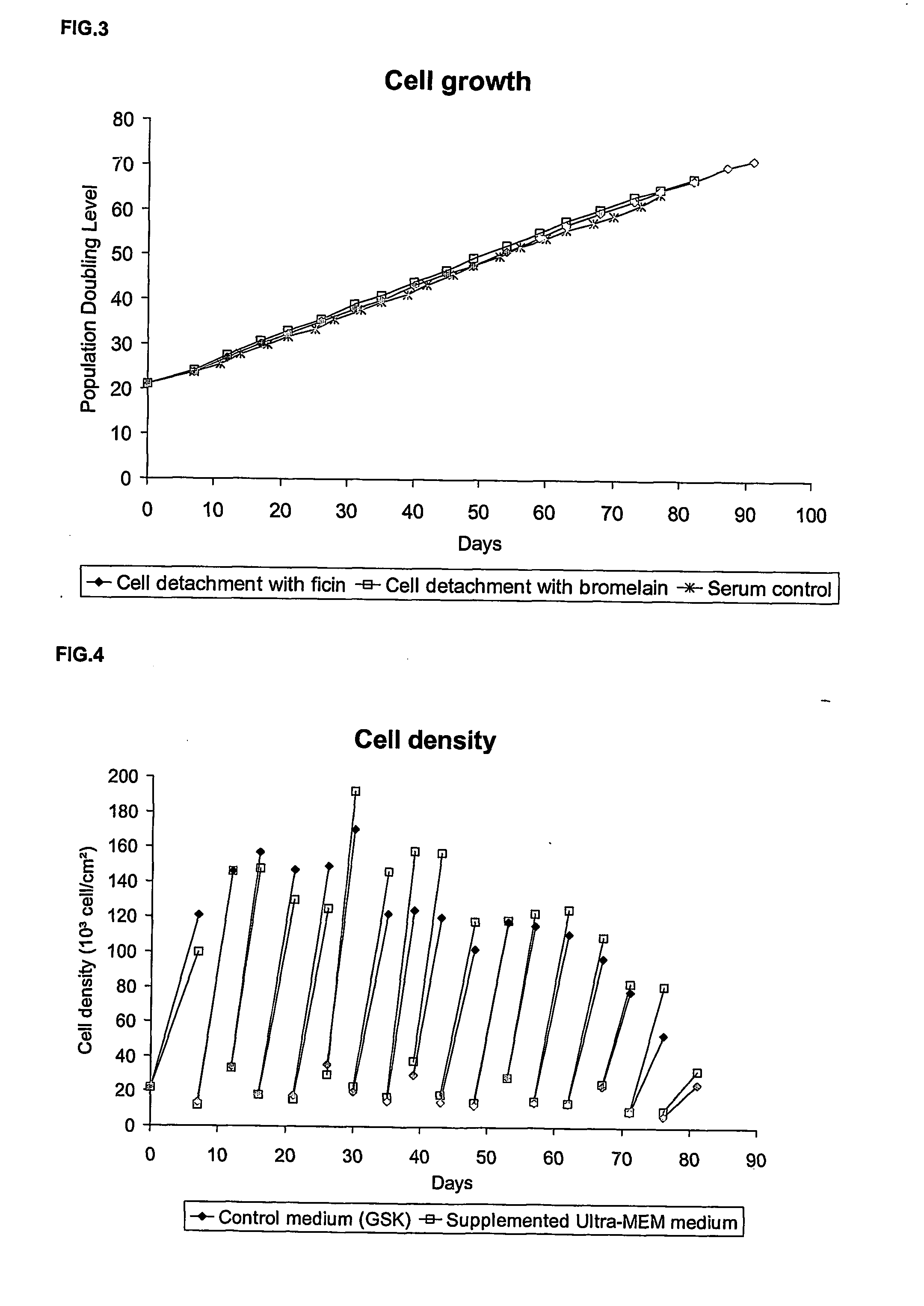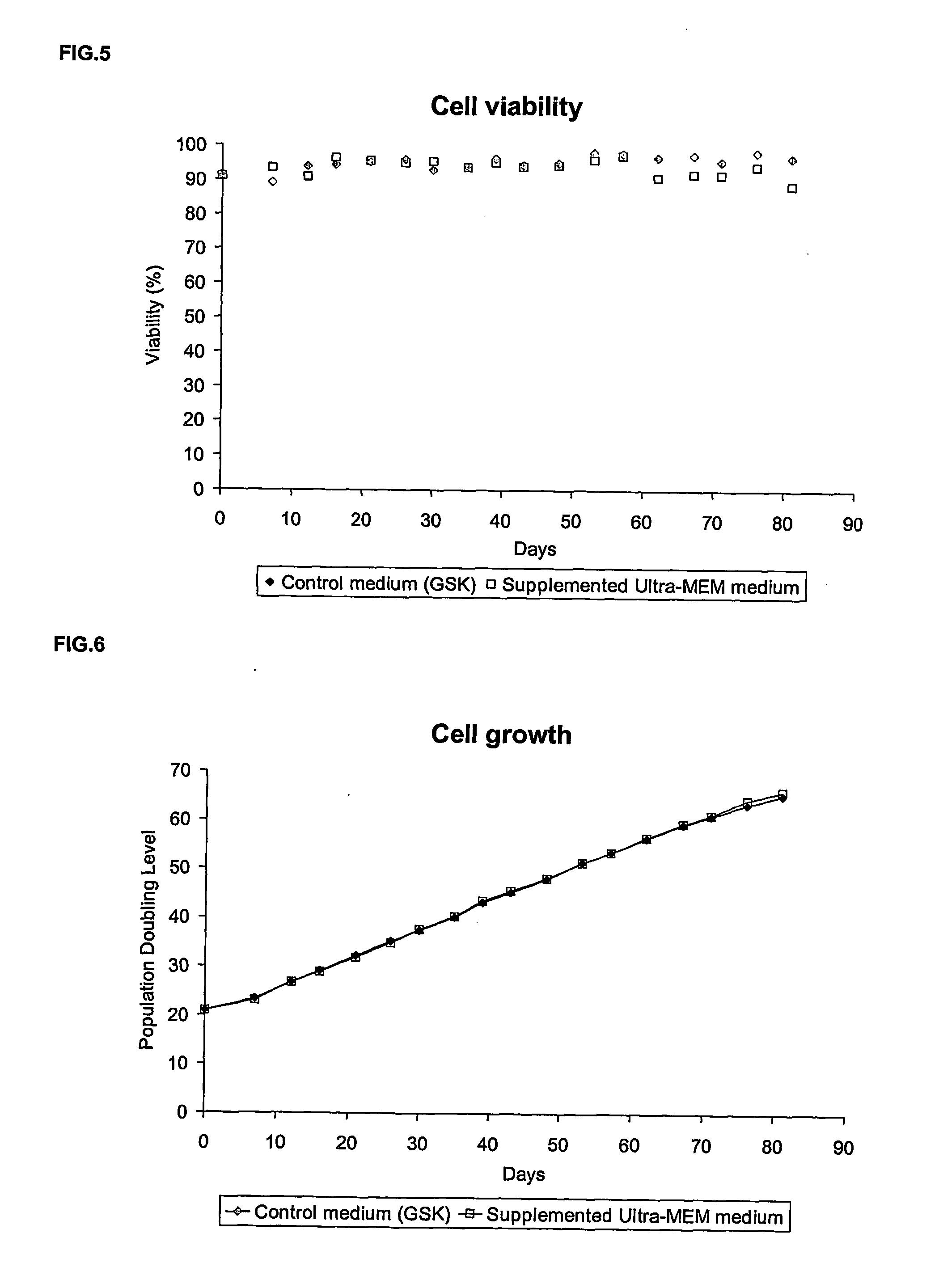Animal-free cell culture method
- Summary
- Abstract
- Description
- Claims
- Application Information
AI Technical Summary
Benefits of technology
Problems solved by technology
Method used
Image
Examples
example i
I.1. Preparation of a Fresh Medium from Individual Components
[0080] An examplary advantageous fresh culture medium comprises all or most of the common ingredients as listed in Table 3. According to the invention it may be suitably supplemented with the growth factors and protein hydrolysate as listed in table 2.
TABLE 3Medium free from components of animal originPreferredPreferredConcentration rangesconcentration rangesconcentrationComponentmg / Lmg / Lmg / LNaH2PO4.H2O 60-280 80-15099Na2HPO4 20-40025-5035NaCl5000-80006000-70006760KCl180-600250-400349AgNO30.000005-0.00004 0.000010-0.0000600.000017AlCl3.6H2O0.000001-0.001 0.00008-0.0000800.000012Ba(C2H3O2)20.000001-0.002 0.00002-0.000030.0000255CaCl2100-760150-250155CdCl2.2½H2O0.000001-0.03 0.000009-0.00003 0.0000187CoCl2.6H2O0.000001-0.003 0.000001-0.00003 0.0000238Cr2(SO4)3.XH2O0.000003-0.0004 0.0000005-0.000008 0.0000066(±15 H2O)CuSO4.5H2O0.00001-0.006 0.00009-0.0008 0.000637Fe(NO3)3.9H2O0.005-1 0.1-0.50.3773FeSO4.7H2O0.02-2 ...
example ii
Process for Producing Animal or Human Anchorage-Dependent Cells in a Culture Medium Substantially Free of any Components from Animal Origin.
Step 1: Cell Detachment
[0094] The culture medium of an anchorage-dependent cell culture, grown in cell culture flask, is removed and kept in a sterile container. This recovered medium is considered as a conditioned medium and will be used for the inoculation of the cells. The cell layer is washed twice with a Phosphate Buffer Saline (PBS) supplemented with EDTA. A target of about 0.04 grams to about 1 grams of EDTA per liter of PBS and preferably about 0.2 grams / L is desirable.
[0095] Once the cell layer is washed, a sufficient volume of the protease solution is added so that the to whole cell layer is covered. A targeted volume of about 0.01 ml / cm2 to 2 ml / cm2 and preferably 0.0333 ml / cm2 is desirable. This protease solution is prepared by dissolution of the enzyme in a PBS supplemented with EDTA. A target of about 0.02 grams to about 0.5 g...
example iii
Process for the Production of Viruses in Animal or Human Anchorage-Dependent Cells in a Culture Medium.
Step 5: Viral Infection
[0110] Anchorage-dependent cells are infected with the same Multipicity Of Infection (MOI) as those applied in the usual processes for anchorage-dependent cell cultures with animal-origin components. For example, a MOI target of about 0.005 to about 1 is desirable for MRC-5 cells infection by Hepatitis A Virus (HAV). Cells are infected in a medium free of animal-origin components as herein described and supplemented with ingredients according to Table 2. For the viral production, the protein hydrolysate is optional.
Step 6: Viral Propagation
[0111] Anchorage-dependent cells infected are incubated at the same temperatures as those applied in the usual processes for viral propagation on anchorage-dependent cell cultures with animal-origin components. For example, a target temperature of about 31° C. to about 33° C. and preferably at 32° C. is desirable for...
PUM
 Login to View More
Login to View More Abstract
Description
Claims
Application Information
 Login to View More
Login to View More - R&D
- Intellectual Property
- Life Sciences
- Materials
- Tech Scout
- Unparalleled Data Quality
- Higher Quality Content
- 60% Fewer Hallucinations
Browse by: Latest US Patents, China's latest patents, Technical Efficacy Thesaurus, Application Domain, Technology Topic, Popular Technical Reports.
© 2025 PatSnap. All rights reserved.Legal|Privacy policy|Modern Slavery Act Transparency Statement|Sitemap|About US| Contact US: help@patsnap.com



